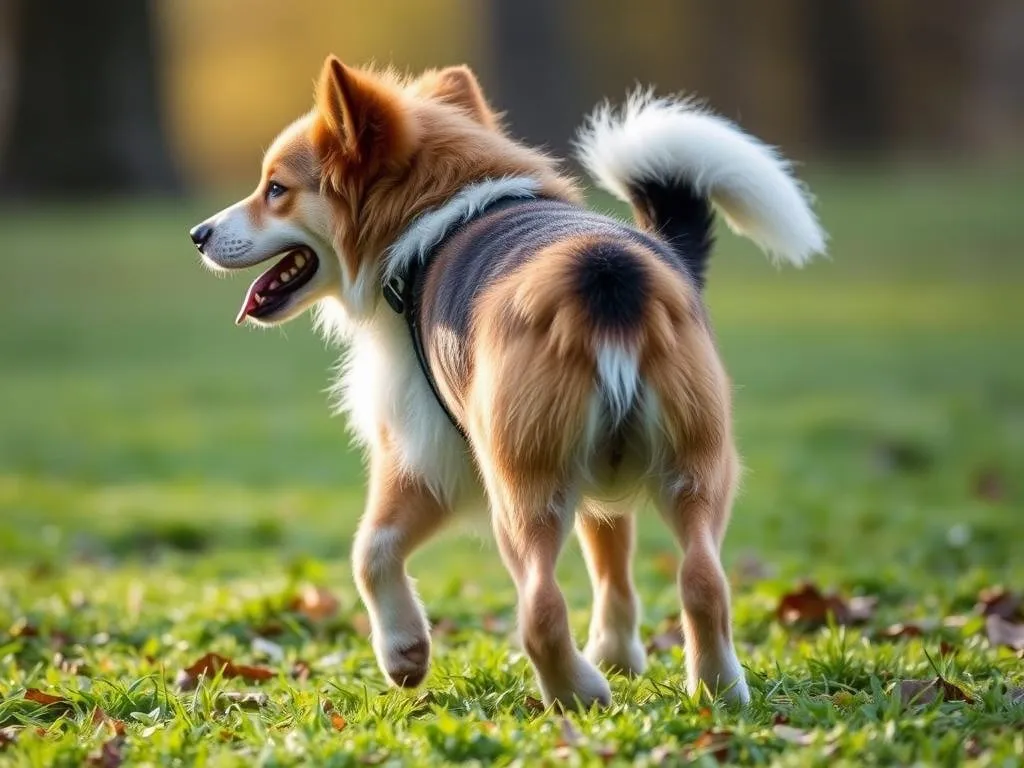
Introduction
Picture this: you walk into your home after a long day, and your dog races to greet you, tail wagging furiously. It’s a heartwarming sight, filled with joy and excitement. But have you ever stopped to wonder, what does it mean when a dog wags its tail? As dog lovers, understanding our canine companions goes beyond cuddles and treats; it requires us to decode their behaviors.
Understanding tail wagging is crucial for dog owners and enthusiasts alike. Tail wagging can convey a range of emotions, from happiness to anxiety, and being able to interpret these signals can enhance your bond with your furry friend. In this article, we will dive deep into the world of dog tail behavior, exploring the different types of wags, their meanings, and the context in which they occur.
By the end, you will have a comprehensive understanding of what does it mean when a dog wags its tail, allowing you to better communicate with and care for your beloved pet.
The Basics of Dog Tail Wags
Anatomy of a Dog’s Tail
A dog’s tail is more than just a fluffy appendage; it comprises various bones, muscles, and nerves that allow for a wide range of movements. The average dog has around six to twenty bones in its tail, depending on the breed, and these bones are connected by joints and muscles. The tail serves multiple functions, including balance, communication, and even temperature regulation.
Tail types vary significantly among dog breeds. Some breeds, like the Basenji, have curly tails, while others, like the Labrador Retriever, have straight, thick tails. Each tail type can influence how a dog communicates its emotions through wagging.
Overview of Tail Wagging
Tail wagging is a behavior observed in dogs when they move their tails back and forth, often rapidly. While many associate tail wagging with happiness, this action can signify various emotions. Dogs may wag their tails for reasons that include excitement, nervousness, or even aggression. Understanding these nuances is crucial for interpreting your dog’s feelings accurately.
Tail Wagging and Dog Emotions
Different Types of Wags
Tail wagging isn’t a one-size-fits-all behavior; different wags can convey distinct emotional states.
-
Slow Wagging: A slow wag can indicate uncertainty or hesitation. This type of wag often occurs when a dog is unsure about a situation or meeting a new person. A dog may be cautious but not necessarily aggressive.
-
Fast Wagging: A rapid, enthusiastic wag typically signals excitement and joy. This wag is often seen during playtime or when greeting someone the dog loves. It’s a clear indication that your dog is happy.
-
Side-to-Side Wagging: When a dog wags its tail side-to-side, it often signifies a friendly disposition. This wag can be seen during social interactions, indicating that the dog is open and friendly.
-
Circular Wagging: A dog that wags its tail in a circular motion is usually expressing extreme excitement or joy. This enthusiastic movement often accompanies playtime or greetings.
Wagging Direction
Interestingly, the direction in which a dog wags its tail can also provide clues about its emotional state.
-
Right Wagging: Studies suggest that when a dog wags its tail to the right, it may signify positive emotions, such as happiness or excitement. This directional wag can suggest that the dog feels safe and secure.
-
Left Wagging: Conversely, a left wag may indicate negative feelings or anxiety. Dogs displaying this wag might be feeling threatened or unsure about their environment.
Context Matters
Situational Triggers for Tail Wags
Understanding the context in which tail wagging occurs is crucial for accurate interpretation. For example:
-
Greeting People or Other Dogs: Dogs often wag their tails when meeting new people or dogs as a way to express excitement and friendliness.
-
Playtime or Excitement: During play, tail wagging is usually more vigorous, signaling that the dog is enjoying itself and wants to engage.
-
Response to Commands: Dogs may wag their tails when responding to commands or during training sessions, indicating their eagerness to participate and please their owner.
Interpreting Tail Wags in Different Scenarios
The environment also plays a significant role in tail wagging behavior. For instance:
-
At the Vet vs. At Home: A dog may wag its tail at home in a relaxed manner but display a more cautious wag at the vet’s office, reflecting stress and anxiety.
-
Meeting Strangers vs. Familiar People: A dog might wag its tail vigorously when greeting familiar people, while a more reserved wag may occur when meeting someone new.
Misinterpretations and Myths
Common Misconceptions About Tail Wagging
One prevalent myth is that all tail wagging signifies friendliness. While many tail wags indicate happiness, some may indicate stress or aggression. It’s essential to consider the entire body language of the dog, not just the tail.
Signs of Stress or Aggression
A dog’s tail position and movement can be indicative of stress or aggression. For example:
-
Tail Held High and Stiff: This position often suggests a dog is alert, possibly aggressive or on guard.
-
Tail Tucked Between Legs: A tucked tail usually indicates fear or submission.
Additionally, other body language cues, such as ear position and facial expressions, provide vital information about a dog’s emotional state and should be observed alongside tail wagging.
How to Respond to Tail Wags
Encouraging Positive Behavior
When your dog wags its tail in a happy, excited manner, it’s an excellent opportunity to reinforce positive behavior. Here are a few techniques:
-
Positive Reinforcement: Use treats or praise when your dog displays happy tail wagging. This encourages your dog to associate tail wagging with positive experiences.
-
Engagement: Spend quality time playing with your dog when it exhibits joyful wagging. This strengthens your bond and promotes a happy environment.
Dealing with Negative Tail Wags
Recognizing signs of stress or aggression is just as important. If your dog seems anxious while wagging its tail, consider the following strategies:
-
Identify Triggers: Understand what situations provoke anxiety or aggressive tail wags and try to mitigate those triggers.
-
Calming Techniques: Implement calming techniques, such as creating a safe space for your dog or using relaxing music to help ease anxiety.
The Science Behind Tail Wagging
Research Studies on Dog Behavior
Recent studies have shed light on the complexities of canine behavior, particularly tail wagging. Research indicates that dogs can differentiate between various emotional cues and respond accordingly. Scientists have found that dogs interpret the tail wags of their peers, which suggests that they communicate through this behavior.
The Role of Tail Wagging in Dog Communication
Tail wagging plays a crucial role in canine social interactions. It serves as a non-verbal communication tool that conveys emotions and intentions to other dogs and humans alike. Observing your dog’s tail movements, along with other body language signals, can lead to a deeper understanding of their feelings and needs.
Conclusion
In summary, understanding what does it mean when a dog wags its tail is vital for dog owners and lovers. Tail wagging can signify a range of emotions, from joy and excitement to anxiety and aggression. By observing the type of wag and the context in which it occurs, you can better understand your dog’s feelings and respond accordingly.
Take the time to watch and learn from your dog’s tail wagging and other body language cues. Developing this understanding not only strengthens your bond but also promotes a happier, healthier relationship with your furry friend. Happy wagging!
FAQs Section
What does it mean when a dog wags its tail slowly?
Slow tail wagging often indicates uncertainty or hesitation, suggesting that your dog may be feeling cautious or unsure about a situation.
Is tail wagging always a sign of happiness?
No, not all tail wagging indicates happiness. It can also signal anxiety, fear, or aggression, depending on the context and other body language cues.
How can I tell if my dog’s tail wagging indicates aggression?
Aggressive tail wagging is often characterized by a stiff position, held high, and accompanied by other tense body language signals, such as raised hackles or growling.
Do all dog breeds wag their tails the same way?
While all dogs wag their tails, the style and frequency can vary based on breed characteristics, individual personality, and emotional context.
What should I do if my dog seems anxious while wagging its tail?
If your dog appears anxious while wagging its tail, try to identify and minimize triggers, and use calming techniques such as creating a safe space for your dog.









